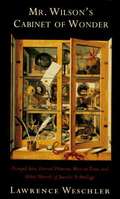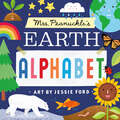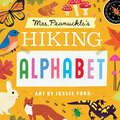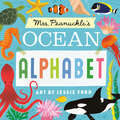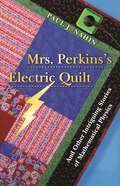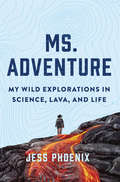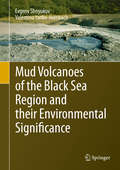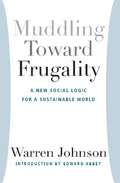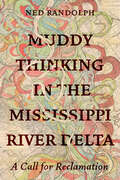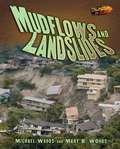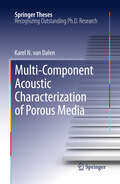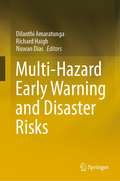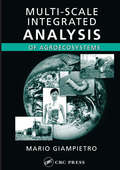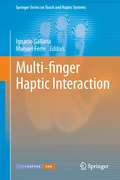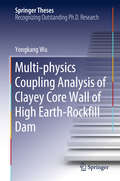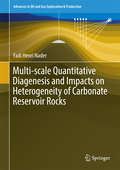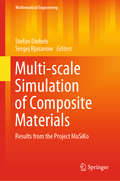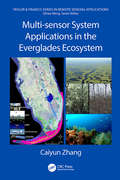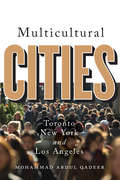- Table View
- List View
Mr. Selden's Map of China: Decoding the Secrets of a Vanished Cartographer
by Timothy BrookSelected for The Globe 100 Books in 2013. A fascinating work of history, biography, cartography, and literary mystery, Mr Selden’s Map of China unlocks the secrets behind a recently discovered map of China like no other of its time. In 1659, a vast and unusual map of China arrived in the Bodleian Library, Oxford. It was bequeathed by John Selden, a London business lawyer, political activist, former convict, MP, and the city’s first Orientalist scholar. Largely ignored, it remained in the bowels of the library, until called up by an inquisitive reader. When Timothy Brook saw it in 2009, he realized that the Selden Map was “a puzzle that had to be solved”: an exceptional artefact so unsettlingly modern-looking it could almost be a forgery. But it was genuine, and what it has to tell us is astonishing. It shows China, not cut off from the world, but a participant in the embryonic networks of global trade that fuelled the rise of Europe — and now power China’s ascent. And it raises as many question as it answers: How did John Selden acquire it? Where did it come from? Who re-imagined the world in this way and, most importantly, what can it tell us about the world at that time? Like a cartographic detective, award-winning author and historian Timothy Brook has provided answers. From the Gobi Desert to the Philippines, from Java to Tibet, and into China itself, Brook uses the map to tease out the varied elements that defined this crucial period in China’s history.
Mr. Wilson's Cabinet of Wonder: Pronged Ants, Horned Humans, Mice on Toast, and Other Marvels of Jurassic Technology
by Lawrence WeschlerWriting with great style and humor, Weschler guides the readers through the Museum of Jurassic Technology and through the mind of its curator, David Wilson, a man of unusual imagination who mounts exhibits such as spore-inhaling ants, bats deploying ultraviolet frequencies, peach-pit carvings, and other exhibits that seem the manifest definition of bizarre.
Mrs. Peanuckle's Earth Alphabet (Mrs. Peanuckle's Alphabet #9)
by Mrs. PeanuckleExplore our wondrous planet while learning the ABCs with Mrs. Peanuckle! With playful text, bright illustrations, and sturdy pages, this alphabet book will engage toddlers, and take them on an alphabet adventure through the natural world!Mrs. Peanuckle shares everything that makes Earth so special—and all the important ways we can protect our home from climate change in her latest tour of the ABCs! From A to Z, Mrs. Peanuckle introduces toddlers to 26 different natural-world experiences. With bold, colorful pages, strong graphic art, and exciting design, these simple nature words are sure to be a hit with budding environmentalists and curious young scientists.Collect all of Mrs. Peanuckle's Alphabet books, including: KitchenHikingBirdTreeBugFlowerFruitVegetable
Mrs. Peanuckle's Hiking Alphabet
by Mrs. PeanuckleWith playful text, bright illustrations, and sturdy pages, Mrs. Peanuckle's alphabet books will engage toddlers, and take them on an alphabet adventure through the natural world!Explore the wondrous world of hiking while learning the ABCs with Mrs. Peanuckle! Mrs. Peanuckle takes on the outdoors and shares all her favorite animals, plants, and more in her latest tour of the ABCs! From A to Z, Mrs. Peanuckle introduces toddlers to 26 different natural-world experiences. With bold, colorful pages, strong graphic art, and exciting design, these simple nature words are sure to be a hit with budding hikers and curious young scientists. Collect all of Mrs. Peanuckle's Alphabets, including: Kitchen, Hiking, Bird, Tree, Bug, Flower, Fruit, and Vegetable!
Mrs. Peanuckle's Ocean Alphabet (Mrs. Peanuckle's Alphabet #10)
by Mrs. PeanuckleMrs. Peanuckle's alphabet books engage toddlers with interesting and informative words, graphic art, and sturdy pages!From A to Z, Mrs. Peanuckle introduces toddlers to words about the earth's oceans. These simple nature words are sure to be a hit with budding biologists, curious young environmentalists, and parents and teachers who want to encourage learning and an awareness of our unique planet! Collect all of Mrs. Peanuckle's Alphabet books, including Fruit, Vegetable, Bug, Flower, Bird, Tree, Hiking, Kitchen, and Earth!
Mrs. Perkins's Electric Quilt: And Other Intriguing Stories of Mathematical Physics
by Paul J. NahinAn incomparable collection of stimulating math puzzles from bestselling author Paul NahinWhat does quilting have to do with electric circuit theory? The answer is just one of the fascinating ways that best-selling popular math writer Paul Nahin illustrates the deep interplay of math and physics in the world around us in his latest book of challenging mathematical puzzles, Mrs. Perkins's Electric Quilt. With his trademark combination of intriguing mathematical problems and the historical anecdotes surrounding them, Nahin invites readers on an exciting and informative exploration of some of the many ways math and physics combine to create something vastly more powerful, useful, and interesting than either is by itself.In a series of brief and largely self-contained chapters, Nahin discusses a wide range of topics in which math and physics are mutually dependent and mutually illuminating, from Newtonian gravity and Newton's laws of mechanics to ballistics, air drag, and electricity. The mathematical subjects range from algebra, trigonometry, geometry, and calculus to differential equations, Fourier series, and theoretical and Monte Carlo probability. Each chapter includes problems—some three dozen in all—that challenge readers to try their hand at applying what they have learned. Just as in his other books of mathematical puzzles, Nahin discusses the historical background of each problem, gives many examples, includes MATLAB codes, and provides complete and detailed solutions at the end.Mrs. Perkins's Electric Quilt will appeal to students interested in new math and physics applications, teachers looking for unusual examples to use in class—and anyone who enjoys popular math books.
Ms. Adventure: My Wild Explorations in Science, Lava, and Life
by Jess Phoenix"Jess Phoenix's work encompasses science and representation in such a delightful melding that it could only come from as spry and playful a soul as hers! Open this book and jump into the volcano!" —Patton Oswalt As a volcanologist, natural hazards expert, and founder of Blueprint Earth, Jess Phoenix has dedicated her life to scientific exploration. Her career path—hard earned in the male-dominated world of science—has led her into still-flowing Hawaiian lava fields, congressional races, glittering cocktail parties at Manhattan&’s elite Explorers Club, and numerous pairs of Caterpillar work boots. It has also inspired her to devote her life to making science more inclusive and accessible. Ms. Adventure skillfully blends personal memoir, daring adventure, and scientific exploration, following Phoenix&’s journey from reality television sites deep in Ecuadorian jungles to Andean glaciers, university classrooms to Death Valley in summer. She has even chased down members of a Mexican cartel to retrieve a stolen favorite rock hammer. Readers will delight in her unbelievable adventures, all embarked on for the love of science.
Mud Volcanoes of the Black Sea Region and their Environmental Significance
by Evgeny Shnyukov Valentina Yanko-HombachThis exceptionally well-illustrated book at a high scientific level describes mud volcanism as a complex, multidimensional phenomenon requiring multidisciplinary study. Mud volcanoes can be used as “cheap windows” to search for gas-hydrates and other mineral resources in the Black Sea region. Nothing similar has been published before, and as one of its unique features the book includes a vast amount of new data unavailable so far to the western reader. The book includes new data on driving forces, mechanisms, origin, geological and geomorphological features of mud volcanoes as well as new data on composition of solid, gaseous, and liquid components of erupted material. It covers a wide geographic region, and its subjects range from geological to environmental to industrial applications.
Muddling Toward Frugality
by Warren JohnsonMr. Johnson's thesis can be summarized without much difficulty: after generations of extravagant and reckless industrial expansion, we are clearly entering an age of economic scarcity. While human demands continue to rise, natural resources, especially the non-renewable kind, become harder to find and more expensive to extract, process, transport and distribute. This simple brute fact is the basic cause of inflation, despite the inability of most professional economists to see it. (The "dismal science" has never been more dismally obtuse than it is today.) The law of diminishing returns is coming into effect. Technological developments can delay the process but not halt or reverse it; nor can we rely on government or big business to save us. Planning for further growth delays the adjustments that must be made, makes a fair sharing of necessary sacrifices more troublesome, and if carried too far will make more severe and painful, because rapid, the inevitable decline of the international economic machine. The best way to deal with the end of affluence is to accept it-not fight it-and to begin, here and now, the unavoidable adaptations, on an individual, family, and community basis. Piecemeal, experimental, and muddling.
Muddy Thinking in the Mississippi River Delta: A Call for Reclamation
by Ned RandolphA free ebook version of this title is available through Luminos, University of California Press's Open Access publishing program. Visit www.luminosoa.org to learn more.Muddy Thinking in the Mississippi River Delta uses the story of mud to answer a deceptively simple question: How can a place uniquely vulnerable to sea level rise be one of the nation's most promiscuous producers and consumers of fossil fuels? Organized around New Orleans and South Louisiana as a case study, this book examines how the unruly Mississippi River and its muddy delta shaped the people, culture, and governance of the region. It proposes a framework of "muddy thinking" to gum the wheels of extractive capitalism and pollution that have brought us to the precipice of planetary collapse. Muddy Thinking calls upon our dirty, shared histories to address urgent questions of mutual survival and care in a rapidly changing world.
Mudflows and Landslides
by Michael Woods Mary B. WoodsImagine that you hear a faint rumbling sound coming from a hillside. the noise gets louder, and when you turn to look, a river of mud is flowing toward you! Big mudflows and landslides can happen unexpectedly, causing terrible disasters. the moving mass of soil and rock carries away people, animals, houses, cars, bridges, trees, and anything else in its path. with dramatic images and firsthand survivor stories--plus the latest facts and figures--this book shows you some of the world's biggest mudflow and landslide disasters up close.
Multi-Component Acoustic Characterization of Porous Media
by Karel N. van DalenThe feasibility to extract porous medium parameters from acoustic recordings is investigated. The thesis gives an excellent discussion of our basic understanding of different wave modes, using a full-waveform and multi-component approach. Focus lies on the dependency on porosity and permeability where especially the latter is difficult to estimate. In this thesis, this sensitivity is shown for interface-wave and reflected-wave modes. For each of the pseudo-Rayleigh and pseudo-Stoneley interface waves unique estimates for permeability and porosity can be obtained when impedance and attenuation are combined. The pseudo-Stoneley wave is most sensitive to permeability: both the impedance and the attenuation are controlled by the fluid flow. Also from reflected-wave modes unique estimates for permeability and porosity can be obtained when the reflection coefficients of different reflected modes are combined. In this case the sensitivity to permeability is caused by subsurface heterogeneities generating mesoscopic fluid flow at seismic frequencies. The results of this thesis suggest that estimation of in-situ permeability is feasible, provided detection is carried out with multi-component measurements. The results of this thesis argely affect geotechnical and reservoir engineering practices.
Multi-Hazard Early Warning and Disaster Risks
by Dilanthi Amaratunga Richard Haigh Nuwan DiasThis book presents a collection of papers under the theme of multi-hazard early warning and disaster risks. These were selected from the presentations made at the International Symposium on Tsunami and Multi-Hazard Risks, Early Warning and Community Awareness in supporting implementation of the Sendai Framework for Disaster Risk Reduction 2015-2030. This conference aimed to recognize achievements and to highlight work that still needs to be carried out. The conference promoted collaboration among academia, research institutions and disaster management offices, and further encouraged multidisciplinary and multi-sectoral interactionThis International Symposium on Multi-Hazard Early Warning and Disaster Risk Reduction provided an important opportunity to reflect upon our progress to date in tackling disaster risk, but also to consider some of the challenges and opportunities that lay ahead of us.A particular focus of this event wasMulti-Hazard Early Warning. During the negotiations for the Sendai Framework, countries and partners highlighted the need to:1. Continue to invest in, develop, maintain and strengthen people-centred, end-to-end early warning systems;2. Promote the application of simple and low cost early warning equipment and facilities;3. Broaden the dissemination channels for early warning information to facilitate early action.Countries also called for the further development of and investment in effective, nationally compatible, regional multi-hazard early warning mechanisms. To address these needs, global Target (g) of the Sendai Framework was adopted, namely to “substantially increase the availability of and access to multi-hazard early warning systems and disaster risk information and assessments to the people by 2030”. As illustrated by recent events in Indonesia, it is also vital to address the challenge of cascading hazards that pose a tsunami risk, and the importance of linking tsunami early warning to a multi-hazard environment. However, moving towards a multi-hazard environment is complex and poses many challenges but can bring significant benefits in terms of efficiencies and also in recognising the links between hazards, such as cascading threats. We very much hope that this book will provide an important platform to address these and other challenges in addressing disaster risk, as well as supporting implementation of the Sendai Framework for Disaster Risk Reduction
Multi-Scale Integrated Analysis of Agroecosystems (Advances In Agroecology Ser.)
by Mario GiampietroEcologists, agronomists, and others who may question the validity of current models for determining sustainable growth of agroecosystems, need a new set of analytical tools that more effectively address the complex nature of related processes. Those who challenge traditional assumptions of optimization and static factors in agricultural modeling de
Multi-finger Haptic Interaction
by Manuel Ferre Ignacio GalianaMulti-finger Haptic Interaction presents a panorama of technologies and methods for multi-finger haptic interaction, together with an analysis of the benefits and implications of adding multiple-fingers to haptic applications. Research topics covered include: design and control of advanced haptic devices;multi-contact point simulation algorithms;interaction techniques and implications in human perception when interacting with multiple fingers.These multi-disciplinary results are integrated into applications such as medical simulators for training manual skills, simulators for virtual prototyping and precise manipulations in remote environments. Multi-finger Haptic Interaction presents the current and potential applications that can be developed with these systems, and details the systems' complexity. The research is focused on enhancing haptic interaction by providing multiple contact points to the user. This state-of-the-art volume is oriented towards researchers who are involved in haptic device design, rendering methods and perception studies, as well as readers from different disciplines who are interested in applying multi-finger haptic technologies and methods to their field of interest.
Multi-physical and Non-orthogonal Geotechnical Plasticity Modeling and Algorithms
by Xiuli Du Dechun Lu Xin Zhou Jingyu LiangThis book primarily introduces innovative multi-physical plastic modeling for geomaterials in unsteady environments and advanced numerical methods for elastoplastic models, topics not systematically covered in other literature. The constitutive models in the form of stress-strain-environment will be interesting to students and researchers in geotechnical engineering and rock and soil mechanics. The book provides a thorough exploration of modeling techniques and algorithmic flowcharts, facilitating a deeper understanding of both theoretical models and numerical methods. It also guides readers in applying these tools to describe the mechanical behavior of geomaterials in various unsteady environments and addresses computational challenges in elastoplastic numerical analysis.
Multi-physics Coupling Analysis of Clayey Core Wall of High Earth-Rockfill Dam (Springer Theses)
by Yongkang WuNominated by Tsinghua University as an outstanding Ph.D. thesis, this book investigates the mechanical properties of unsaturated compacted clayey soil, the multi-field coupling consolidation theory of unsaturated soil and its application to a 261.5 m high earth-rockfill dam. It proposes a multi-field coupling analysis method of consolidation, and develops an efficient and practical finite element (FE) program for large-scale complex earth-rockfill dams. The book is primarily intended for researchers studying the multi-field coupling analysis of seepage consolidation.
Multi-risk Interactions Towards Resilient and Sustainable Cities (Advances in Sustainability Science and Technology)
by Tiago Miguel FerreiraFor years, researchers have studied the risks of individual natural hazards in urban areas. However, the impact of multiple hazards has not yet received widespread attention in research and urban management practice, which is a significant gap in the current climate change context. This book aims to contribute to filling that gap by examining the process of identifying, assessing, and managing multi-hazard risks in urban areas. From identifying and assessing the vulnerability of the elements exposed to the impact of natural hazards, including earthquakes, floods, fires, and landslides, this book covers all the critical stages of multi-hazard risk assessment and management in a climate change context. The concepts and approaches discussed in the book are applied to the Lisbon Metropolitan Area, a dynamic and thriving metropolis, allowing readers to see those theories applied in a real setting. In addition to providing a solid theoretical foundation, this book offers practical guidelines for conducting risk assessment at the metropolitan scale, which makes it a valuable resource for researchers, practitioners, and decision-makers interested in understanding and managing multi-hazard risks in urban areas.
Multi-scale Analysis for Random Quantum Systems with Interaction
by Yuri Suhov Victor ChulaevskyThe study of quantum disorder has generated considerable research activity in mathematics and physics over past 40 years. While single-particle models have been extensively studied at a rigorous mathematical level, little was known about systems of several interacting particles, let alone systems with positive spatial particle density. Creating a consistent theory of disorder in multi-particle quantum systems is an important and challenging problem that largely remains open. Multi-scale Analysis for Random Quantum Systems with Interaction presents the progress that had been recently achieved in this area. The main focus of the book is on a rigorous derivation of the multi-particle localization in a strong random external potential field. To make the presentation accessible to a wider audience, the authors restrict attention to a relatively simple tight-binding Anderson model on a cubic lattice Zd. This book includes the following cutting-edge features: an introduction to the state-of-the-art single-particle localization theory an extensive discussion of relevant technical aspects of the localization theory a thorough comparison of the multi-particle model with its single-particle counterpart a self-contained rigorous derivation of both spectral and dynamical localization in the multi-particle tight-binding Anderson model. Required mathematical background for the book includes a knowledge of functional calculus, spectral theory (essentially reduced to the case of finite matrices) and basic probability theory. This is an excellent text for a year-long graduate course or seminar in mathematical physics. It also can serve as a standard reference for specialists.
Multi-scale Quantitative Diagenesis and Impacts on Heterogeneity of Carbonate Reservoir Rocks
by Fadi Henri NaderThis book is both a review and a look to the future, highlighting challenges for better predicting quantitatively the impact of diagenesis on reservoir rocks. Classical diagenesis studies make use of a wide range of descriptive analytical techniques to explain specific, relatively time-framed fluid-rock interaction processes, and deduce their impacts on reservoir rocks. Future operational workflows will consist of constructing a conceptual diagenesis model, quantifying the related diagenetic phases, and modelling the diagenetic processes. Innovative approaches are emerging for applied quantitative diagenesis, providing numerical data that can be used by reservoir engineers as entry (input) data, and for validating results of numerical simulations. Geometry-based, geostatistical and geochemical modelling do not necessarily mimic natural processes, they rather provide reasonable solutions to specific problems.
Multi-scale Simulation of Composite Materials: Results from the Project MuSiKo (Mathematical Engineering)
by Stefan Diebels Sergej RjasanowDue to their high stiffness and strength and their good processing properties short fibre reinforced thermoplastics are well-established construction materials.Up to now, simulation of engineering parts consisting of short fibre reinforced thermoplastics has often been based on macroscopic phenomenological models, but deformations, damage and failure of composite materials strongly depend on their microstructure. The typical modes of failure of short fibre thermoplastics enriched with glass fibres are matrix failure, rupture of fibres and delamination, and pure macroscopic consideration is not sufficient to predict those effects. The typical predictive phenomenological models are complex and only available for very special failures. A quantitative prediction on how failure will change depending on the content and orientation of the fibres is generally not possible, and the direct involvement of the above effects in a numerical simulation requires multi-scale modelling.One the one hand, this makes it possible to take into account the properties of the matrix material and the fibre material, the microstructure of the composite in terms of fibre content, fibre orientation and shape as well as the properties of the interface between fibres and matrix. On the other hand, the multi-scale approach links these local properties to the global behaviour and forms the basis for the dimensioning and design of engineering components. Furthermore, multi-scale numerical simulations are required to allow efficient solution of the models when investigating three-dimensional problems of dimensioning engineering parts.Bringing together mathematical modelling, materials mechanics, numerical methods and experimental engineering, this book provides a unique overview of multi-scale modelling approaches, multi-scale simulations and experimental investigations of short fibre reinforced thermoplastics. The first chapters focus on two principal subjects: the mathematical and mechanical models governing composite properties and damage description. The subsequent chapters present numerical algorithms based on the Finite Element Method and the Boundary Element Method, both of which make explicit use of the composite’s microstructure. Further, the results of the numerical simulations are shown and compared to experimental results.Lastly, the book investigates deformation and failure of composite materials experimentally, explaining the applied methods and presenting the results for different volume fractions of fibres.This book is a valuable resource for applied mathematics, theoretical and experimental mechanical engineers as well as engineers in industry dealing with modelling and simulation of short fibre reinforced composites.
Multi-sensor System Applications in the Everglades Ecosystem (Remote Sensing Applications Series)
by Caiyun ZhangThis book explores the applicability of multiple remote sensors to acquire information relevant to restoration and conservation efforts in wetlands using data collected from airborne and space multispectral/hyperspectral sensors, light detection and ranging (LiDAR), Unmanned Aircraft Systems (UAS), and a hand-held spectroradiometer. This book also examines digital data processing techniques such as object-based image analysis, machine learning, texture analysis, and data fusion. After an introduction to the Everglades and to remote sensing, the book is divided into four parts based on the sensor systems used. There are chapters on vegetation mapping, biomass and water quality modeling, applications of hyperspectral data for plant stress analysis and coral reef mapping, studies of airborne LiDAR data for coastal vulnerability analysis and DEM improvement, as well as chapters that explore a fusion of multiple sensors for different datasets. <p><p>Features <li>Introduces concepts, theories, and advanced processing techniques <li>A complete introduction of machine learning, object-based image analysis, data fusion, and ensemble analysis techniques in processing data from multiple remote sensors <li>Explains how multiple remote sensing systems are applied in the wetland ecosystems of Florida <li>The author had been teaching and using both systems and her research is widely recognized <p><p>Multi-sensor System Applications in the Everglades Ecosystems provides a comprehensive application of remote sensing techniques in the Florida Everglades and its coastal ecosystems. It will prove an invaluable resource for the restoration and conservation of the Florida Everglades and beyond, for global wetlands in general. Any professional, scientist, engineer, or student working with remote sensing and wetland ecosystems will reap enormous benefits from this book.
Multi-stakeholder Processes for Governance and Sustainability: Beyond Deadlock and Conflict
by Minu HemmatiGovernments, business, international bodies and local groups are turning to multi-stakeholder processes to find practical ways forward. This book explains how MSPs can be organized to deliver their potential for successful resolution of complex issues and for sustainable development. It includes detailed examples and provides practical checklists, explaining how to get beyond adversarial politics and achieve positive results.
Multicriteria Analysis: Applications to Water and Environment Management
by Ferenc Szidarovszky Mahdi ZarghamiMulticriteria analysis is one of the most important fields of decision science. This book gives an outline of the formulation of an appropriate model and presents a comprehensive summary of the most popular methods for solving multicriteria decision problems. In addition to the classical approach the book introduces fuzzy and stochastic methodology, models with uncertainty, social choice and conflict resolution. All methods are illustrated with easy to follow simple examples. At the end of each chapter detailed case studies are given in water and environment management including inter-basin water transfer, urban water management, water allocation, groundwater quality management, forest treatment, ranking water resources projects, reservoir planning, water distribution network design and long-term watershed management. The new methodology and the wide variety of case studies are not easily accessible elsewhere.
Multicultural Cities: Toronto, New York, and Los Angeles
by Mohammed Abdul QadeerWhat defines a multicultural city? Policy? Geography? Demography? In Multicultural Cities, Mohammad Abdul Qadeer offers a tour of three of North America's premier multicultural metropolises - Toronto, New York, and Los Angeles - that demonstrates the critical qualities that make these cities multicultural.Guided by the perspective that multiculturalism is the combination of cultural diversity with a common ground of values and institutions, Qadeer examines the social geography, economy, and everyday life of each metropolitan area. His analysis spans the divide between Canada, where multiculturalism is official government policy, and the United States, where it is not. A comprehensive investigation of how some of today's leading majority-minority cities thrive, written by a keen observer of North American urban life, Multicultural Cities is an important complement to any discussion about how cities can and should accommodate diversity.

